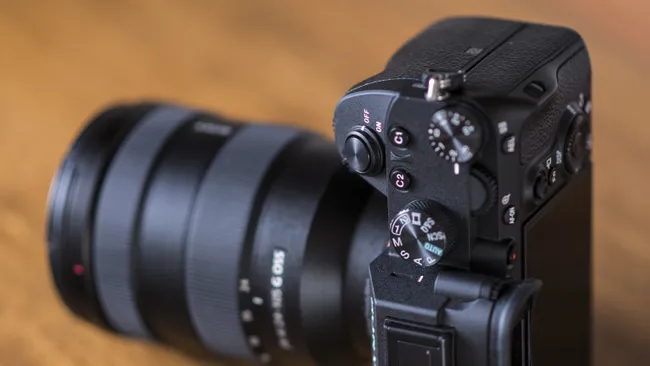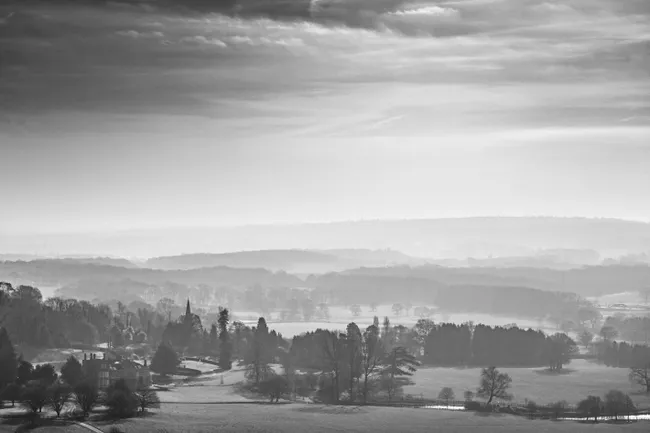No longer the poor relative
OUR CONCLUSION
The Alpha 7 III is a brilliant camera that meets the needs of many photographers. Sony has taken some of the best features from its flagship Alpha A9 and A7R III and put them in a single camera that offers a fantastic mix of performance and image quality. You can no longer wish for the price you called.
BENEFITS
DISADVANTAGE
OUR CONCLUSION
The Alpha 7 III is a brilliant camera that meets the needs of many photographers. Sony has taken some of the best features from its flagship Alpha A9 and A7R III and put them in a single camera that offers a fantastic mix of performance and image quality. You can no longer wish for the price you called.
BENEFITS
- 693-point AF system
- 10 FPS burst speed
- 4K video without crop factor
- 15 levels of dynamic range
- 5 axis image stabilization
- Compact, durable housing
DISADVANTAGE
- Limited touchscreen functions
- Only one SD slot supports UHS-II cards
- Some screen tearing in the EVF (artifacts in the picture)
- Bad weather protection around the accessories connections
At Sony, the Alpha A7 III forms the lower end of mirrorless system cameras with a full-frame sensor and is intended to appeal to both interested photo enthusiasts and professionals.
In the past, the A7 series has always seemed somewhat neglected compared to the A7R and A7S series. While the pixel cannon A7R and the lowlight wonder A7S set new standards in the photo and video field, the A7 series was always something as the basic model with solid features but without being particularly apparent.
That could change with the third generation of the A7. Because with a whole range of features that come from the flagships Alpha A9 (English-speaking) and Alpha A7R III (English-speaking), the Alpha A7 III no longer looks like a basic model
The features
Completely new 24.2 MP rear-illuminated sensor
5-axis image stabilizer that compensates for 5 shutter speeds
4K video with full use of the sensor width (no crop)
Sony had no ambitions to increase the resolution of the Alpha A7 III and so it remains at 24.2 MP, just like the predecessor. Nevertheless, the sensor has been completely redeveloped and offers a back-exposed structure that, together with the latest BIONZ X image processor, significantly improves sensitivity to light - compared to its predecessor. The ISO can be stretched up to 204,800 (as with the Alpha A9) and thus offers three levels more than the A7 II with its limit of “only” 25,600. Sony itself also mentions that the A7 III would reach a dynamic range of 15 levels with its 14 bit RAW files.
SONY ALPHA A7 III SPECS
- Sensor: 24.2MP backlit full frame CMOS sensor
- Lens mount: Sony FE
- Screen: 3.0-inch tilt-angle touchscreen, 921,000 pixels
- Burst shooting: 10 fps
- Autofocus: 693-point AF
- Video: 4K
- Connectivity: Wi-Fi, NFC and Bluetooth
- Battery power: 710 shots
- Weight: 650 g
The electronic viewfinder (EVF) with 2.3 million pixels does not match the EVF of the A7R III with its 3.8 million pixels. But also the EVF of the A7 III got a slightly higher magnification factor from 0.71x to now 0.78x.
As with other recently introduced Sony cameras, the Alpha A7 III now has a touch-capable 3-inch tilt display and thus enables some essential functions such as setting the focus point and quickly navigating through the image gallery. However, the A7 III is still guilty of in-depth navigation through the camera menu via touch.
The 5-axis in-body image stabilization system of the Alpha A7 III has also been improved. This now offers a stabilization that corresponds to a shutter speed compensation by 5 levels. The predecessor had 4.5
It's not a big surprise that the A7 III can record videos in 4K. With a frame rate of 24 p, the full width of the sensor is used, with full pixel readout and without pixel binning. This processes a quantity of pixels that corresponds approximately to a 6K video resolution (2.4 times as much as is actually required for a 4K video). Only then is the material oversampled to produce a 4K video image that, according to Sony, has exceptional level of detail and depth. If you are filming at 30 frames per second, you still have a 1.2x crop option with which approximately a 5K section of the sensor is used.
Like the Alpha A7R III, the Alpha A7 III also offers a new HLG (Hybrid Log-Gamma) profile, which enables a direct HDR workflow, so that HDR (HLG) capable televisions can display the 4K HDR image.
S-Log2 and S-Log3 are also available to enable more detailed color grading. These can be used in Full HD up to a frame rate of 120 fps.
The Alpha A7 III offers two SD card slots, but only one of them supports the faster UHS-II cards, just like the Alpha A7R III does. Sony offers Wi-Fi and NFC in the A7 III to transfer images, but no Bluetooth (which would enable an energy-saving, permanent connection between the camera and a smart device for smooth image transfer).
Construction and Handling
- Design identical to the Alpha A7R III
- Has a multi-selection joystick and an AF-On button
- Dust and weatherproof
The Alpha A7 III has the same body as the Alpha A7R III, giving the A7 III the same improvements in terms of operation as its higher-resolution sister.
Although there is no special mode dial or focus mode selection, the Alpha A7 III still benefits from the new multi-selection joystick. As with the A7R III, the joystick provides a significant improvement in operation, since the AF points can now be set correctly much faster. The special AF-On button on the back of the camera is another improvement to refocus at the push of a button. The button is nicely positioned, even if we would not think it bad, if it would stand out a little more so that it is easier to use.
The rear dial is set slightly higher than on the Alpha A7 II. It is now less likely that you will change settings accidentally, because the resistance of the dial is a little larger.
Another positive influence of the A7R III is that the eye sensor for the EVF now deactivates when the screen is unfolded. This allows you to take pictures at waist level, for example, without the screen going out and the EVF going off.
In general, the case is a little wider than that of the A7 II, but feels better thanks to the improved handle. Just like the overall impression of the housing, which is mainly made of magnesium, which corresponds to that of the Alpha A7R III. However, it is not exactly the same robustness, as the back of the A7R III is also made of magnesium, but the A7 III uses plastic.
As you would expect from a camera in this price range, all important buttons and rotary knobs are protected so that dust and moisture do not stand a chance. However, just like with the A9, we found that the 3 cover tabs on the side of the Alpha A7 III (for access to most connections) do not have the high level of sealing that we hoped for. The protective flaps feel a bit flimsy, also because there doesn't seem to be any rubber seals at the same time. So you should definitely double check whether these covers are closed correctly if you want to take pictures under imperfect weather conditions.
While the menu of the A7III is as extensive as that of its predecessor, navigation in the new color-structured system is somewhat easier. Once you have set the various freely assignable buttons on the camera and made use of the various control options mounted directly on the housing, you should rarely have to delve into the actual menu.
- Autofocus
- Same 693 point AF system as the Alpha A9
- 93% coverage
- Focused to -3EV
It is rare to see a manufacturer take the top model's AF system and install it in a camera that only costs half of it. But that's exactly what Sony did with the Alpha A7 III.
The Alpha A7 III gets the same brilliant 693-point autofocus with phase detection that the Alpha A9 has.
This is a huge step compared to the now rather weak 117-point AF from the Alpha A7 II. The new system offers an impressive coverage of 93% of the image area with an additional 425 contrast detection point system for support. The autofocus works up to a weak exposure level of -3EV.
At the same time, the Alpha A7 III offers a wide range of AF modes to make focusing as simple or as detailed and dedicated to the photographer as the situation requires.
As with the Alpha A9, the tracking performance is very impressive. For example, in the continuous AF mode (AFC) and one of the sophisticated AF modes such as the lock-on: flexible point M. Although the tracking system can be confused by fast and irregular movements, the auto focus is generally very surprising and reliable . When planning a shoot full of action, there is no doubt that this camera has one of the best tracking systems. This is extremely impressive for the price of the A7 III.
In addition, the Alpha A7 III also gets Sony's latest eye autofocus. This is a great feature for portrait photography as well as for society photographers. The system focuses and follows the person's eyes in the picture, even if they briefly look down or away from the camera.
Performance
Speed of continuous shooting was doubled (compared to A7 II)
New silent shutter mode
Significantly improved battery life
In contrast to the Alpha A7 II, which could only take 5 photos per second, the Sony Alpha A7 III doubles this number to a very impressive 10 photos per second. The camera owes this performance to the front-end LSI, which is installed in the A7 III and significantly improves the performance of the camera in some areas.
The buffer capacity of the camera is a very impressive 89 compressed RAW photos (or 40 uncompressed), with JPEG files the Alpha A7 III in 10 fps mode only ends after 177 photos, a big leap forward compared to 52 JPEGs Buffer memory of the A7 II. That should be more than enough to satisfy all demands on the serial picture mode in this price category.
If you ever want to take photos discreetly or in a quiet environment, you can use the electronic shutter of the Alpha 7 III. With the Silent Mode, this offers a noiseless option without having to do without the 10 fps burst speed.
The viewfinder is large and bright, and its sharpness is very good. If we can complain at all, then a little tearing (image artifacts of several successive frames in the same image) if you move the camera back and forth too quickly.
The rear display is very good, but just like other cameras in the Sony Alpha series, there is still room for improvement when it comes to integrating menu control and setting options via the display.
The 5-axis image stabilizer of the Alpha A7 III works excellently, so that you can easily take pictures with slower shutter speeds and still get sharp images.
Sony has had long issues with battery performance, but it appears that they have overcome this vulnerability with the Alpha A7 III. The battery is said to hold 710 photos, which is a big improvement over the 350 images per battery in the Alpha A7 II. The performance of the A7 III even exceeds the 480 images per battery of the Alpha A9.
Picture Quality
Excellent ISO performance
Detailed pictures
Impressive dynamic range
As with Sony's other mirrorless full-frame 24.2 MP camera, the Alpha A9, the sensor is capable of delivering images with excellent depth of detail. As long as you don't plan to produce large format prints over A2 format, the Alpha A7 III does a stunning job. If higher resolution is required, the A7R III is an alternative (42.2 MP).
Although the sensor of the A7 III does not benefit from the stack design of the Alpha A9, with the technology adopted from the rear-exposed sensor, the Alpha A7 is also able to deliver excellent ISO performance. With standard sensitivity, the images look incredibly clean and free from noise. Even with ISO6400, the results pass an accurate inspection. You can find very fine brightness noise, but this doesn't really affect the image quality.
If you go further and use ISO 12.800, you should still get satisfactory results. The image noise in the brightness is a little stronger, but not too strong yet. One notices a color noise especially in the RAW files, which is easy to compensate for in post-processing.
The Alpha A7R III may outperform the A7 III in terms of dynamic range, but not particularly. The sensor of the A7 III offers great flexibility here; the highlights are correctly exposed and you can still easily get many details out of the shadows if you postprocess the RAW files.
Conclusion
The Alpha A7 III cannot quite match the breathtaking performance or resolution of its big brothers. Nevertheless, it is a brilliant camera that meets most of the needs of many photographers.
Sony has taken some of the best features from its flagship Alpha A9 and A7R III and put them in a single camera that offers a fantastic mix of performance and picture quality.
The 693-point autofocus is stunning, and competing cameras from other manufacturers at the same price are not nearly as mature as the Alpha A7 III. The 10 fps burst speed should also meet most needs. The 24.2 MP full-frame sensor, illuminated from the rear, delivers consistently excellent results throughout the ISO range, while the dynamic range is no less impressive.
Meanwhile, the further developed housing, which comes from the Alpha A7R III, allows a significantly more comfortable handling than its predecessor and the possibility to shoot 4K videos without crop makes the A7 III a very versatile camera.
Of course there is still room for improvement, such as more setting and control options via touchscreen or a reduction in tearings in the EVF. We are also a bit skeptical about the weather protection on the accessory ports - but Sony apparently thinks they did enough to protect the inside of the camera from the weather.
However, these complaints are only small aspects and fade when you look at the really large amount of features of the Alpha A7 III. For the price of this camera you can no longer wish for.
Competitor
Canon EOS 6D Mark II
Canon's full-frame DSLR is a solid camera, but cannot keep up with the Alpha A7 III in terms of performance. A serial image speed of 6.5 frames per second and a very conservative 45-point auto focus are no comparison to the A7 III. The dynamic range could also be better with the Canon.












0 Comments:
Post a Comment